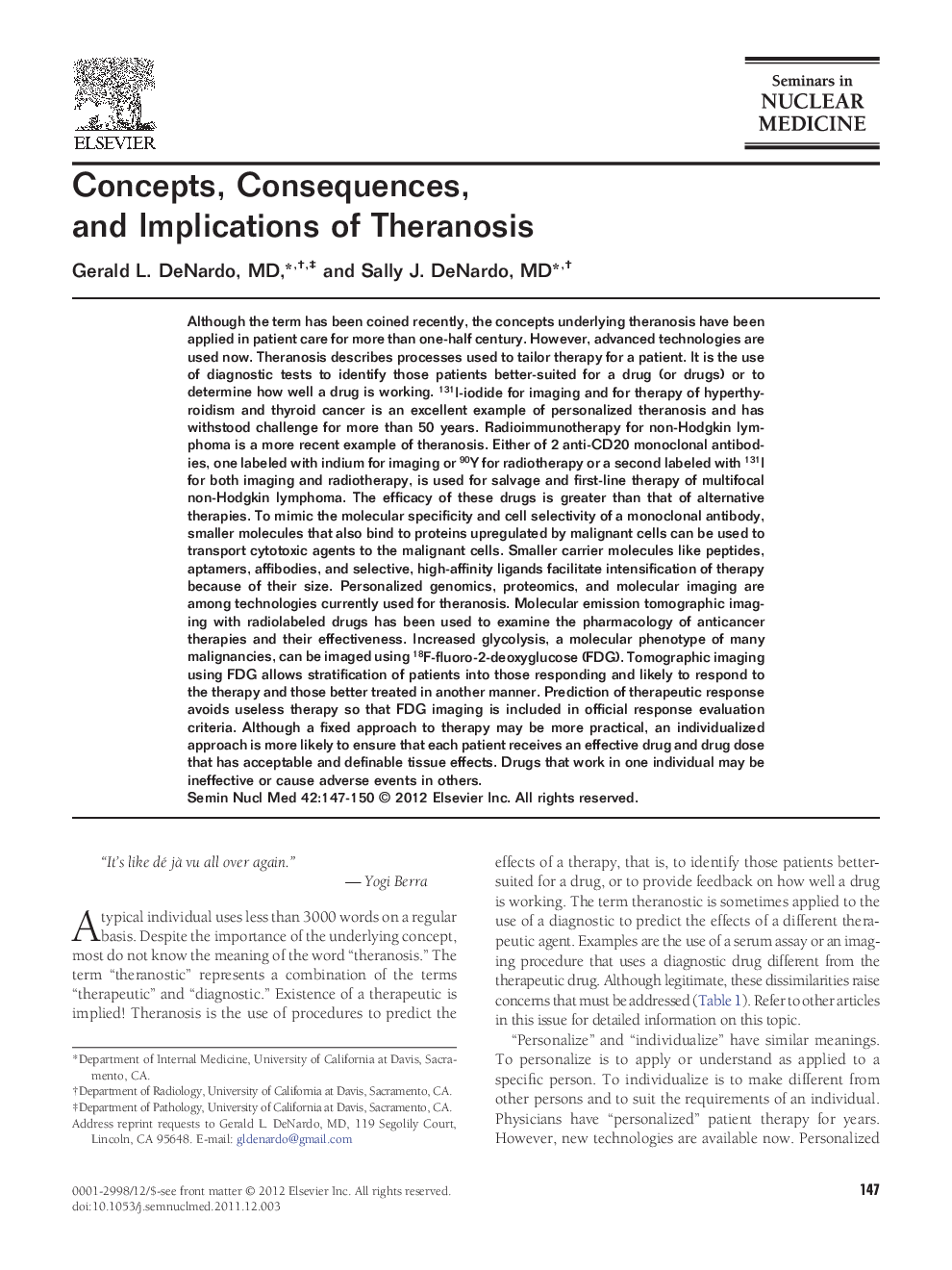| Article ID | Journal | Published Year | Pages | File Type |
|---|---|---|---|---|
| 4251241 | Seminars in Nuclear Medicine | 2012 | 4 Pages |
Although the term has been coined recently, the concepts underlying theranosis have been applied in patient care for more than one-half century. However, advanced technologies are used now. Theranosis describes processes used to tailor therapy for a patient. It is the use of diagnostic tests to identify those patients better-suited for a drug (or drugs) or to determine how well a drug is working. 131I-iodide for imaging and for therapy of hyperthyroidism and thyroid cancer is an excellent example of personalized theranosis and has withstood challenge for more than 50 years. Radioimmunotherapy for non-Hodgkin lymphoma is a more recent example of theranosis. Either of 2 anti-CD20 monoclonal antibodies, one labeled with indium for imaging or 90Y for radiotherapy or a second labeled with 131I for both imaging and radiotherapy, is used for salvage and first-line therapy of multifocal non-Hodgkin lymphoma. The efficacy of these drugs is greater than that of alternative therapies. To mimic the molecular specificity and cell selectivity of a monoclonal antibody, smaller molecules that also bind to proteins upregulated by malignant cells can be used to transport cytotoxic agents to the malignant cells. Smaller carrier molecules like peptides, aptamers, affibodies, and selective, high-affinity ligands facilitate intensification of therapy because of their size. Personalized genomics, proteomics, and molecular imaging are among technologies currently used for theranosis. Molecular emission tomographic imaging with radiolabeled drugs has been used to examine the pharmacology of anticancer therapies and their effectiveness. Increased glycolysis, a molecular phenotype of many malignancies, can be imaged using 18F-fluoro-2-deoxyglucose (FDG). Tomographic imaging using FDG allows stratification of patients into those responding and likely to respond to the therapy and those better treated in another manner. Prediction of therapeutic response avoids useless therapy so that FDG imaging is included in official response evaluation criteria. Although a fixed approach to therapy may be more practical, an individualized approach is more likely to ensure that each patient receives an effective drug and drug dose that has acceptable and definable tissue effects. Drugs that work in one individual may be ineffective or cause adverse events in others.
